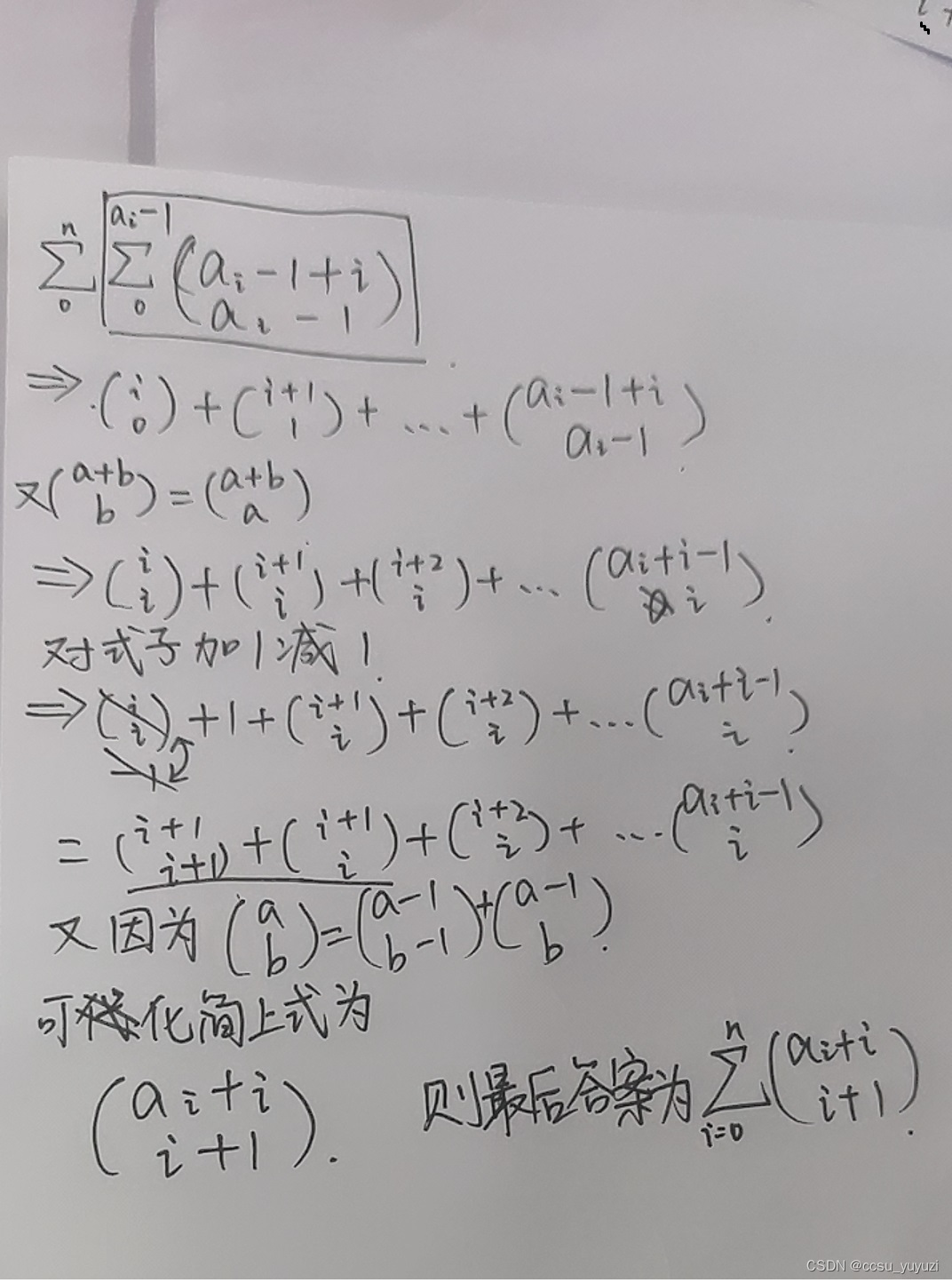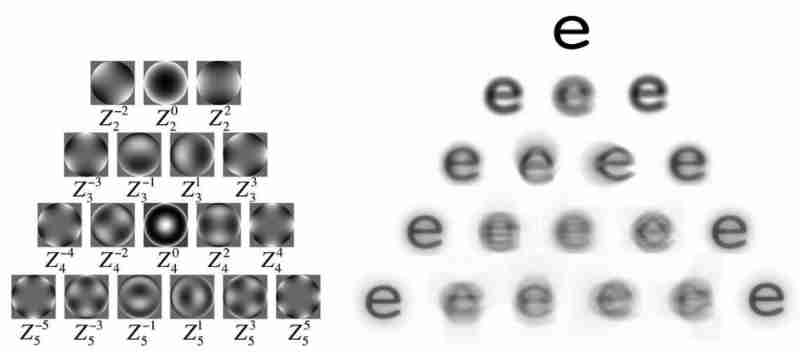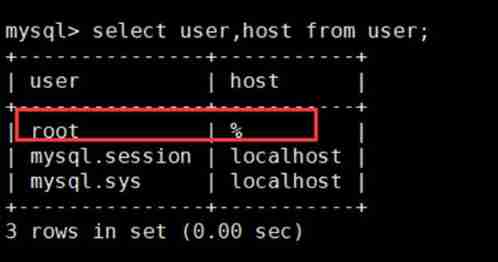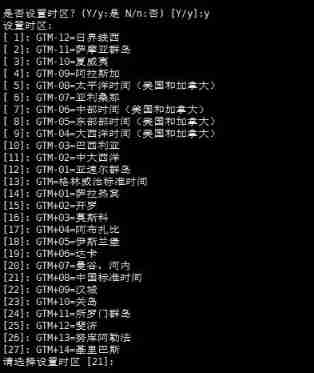当前位置:网站首页>Codeforces Global Round 21(A-E)
Codeforces Global Round 21(A-E)
2022-07-04 08:38:00 【ccsu_ yuyuzi】
Catalog
C. Fishingprince Plays With Array
A. NIT orz
Sign in
#include<map>
#include<cmath>
#include<set>
#include<queue>
#include<string>
#include<vector>
#include<cstring>
#include<iostream>
#include<algorithm>
#include<unordered_set>
#include<unordered_map>
#define int long long
using namespace std;
const int N =5e5+10,mod=998244353;
void solve()
{
int n,z,ans=0,x;
cin>>n>>z;
for(int i=1;i<=n;i++)
{
cin>>x;
if((x|z)>=ans)
ans=x|z;
}
cout<<ans<<"\n";
return ;
}
signed main()
{
int t;
cin>>t;
while(t--)
solve();
return 0;
}B. NIT Destroys the Universe
The question : Give you an array , We can operate : Select an interval , Let all the numbers in this interval become the smallest non negative numbers that have never appeared in this interval (mex). How many steps can I take to set this array all to 0.
Ideas : It takes only two steps at most to set all to 0, We started by choosing the entire array to become theirs mex, At this time, all the numbers will become a non 0 Number of numbers ( If not 0 Just one step , Directly all become 0). The second step is to select the whole array again , This is the time 0 There must be no , So it becomes 0.
#include<map>
#include<cmath>
#include<set>
#include<queue>
#include<string>
#include<vector>
#include<cstring>
#include<iostream>
#include<algorithm>
#include<unordered_set>
#include<unordered_map>
#define int long long
using namespace std;
const int N =5e5+10,mod=998244353;
int arr[100005];
void solve()
{
int n,cnt=0;
cin>>n;
for(int i=1;i<=n;i++)
cin>>arr[i];
if(arr[1]!=0)
cnt++;
for(int i=2;i<=n;i++)
if(arr[i]>0&&arr[i-1]==0)
cnt++;
if(cnt==0)
cout<<"0";
else if(cnt==1)
cout<<"1";
else
cout<<"2";
cout<<"\n";
return ;
}
signed main()
{
int t;
cin>>t;
while(t--)
solve();
return 0;
}C. Fishingprince Plays With Array
Problem - C - Codeforces https://codeforces.com/contest/1696/problem/C
https://codeforces.com/contest/1696/problem/C
The question : Give you two lengths and two arrays , There is also a limited length k, When an element in the array is k A multiple of the , You can divide it into k Divide this element by k The average of . Empathy , Yes k Connected by the same number of hours , Can be combined into one number , by k Multiply by the same number . Ask whether there is the first array to get the second array .
Ideas : Split the two arrays according to the first rule , See whether the two arrays after all splitting are the same , Pay attention to the data range , I use the structure to record the value and continuous number of numbers .
#include<map>
#include<cmath>
#include<set>
#include<queue>
#include<string>
#include<vector>
#include<cstring>
#include<iostream>
#include<algorithm>
#include<unordered_set>
#include<unordered_map>
#define int long long
using namespace std;
int a[50004],b[50004];
struct node
{
int num,sum;
}anum[50004],bnum[50004];
void solve()
{
int n,m,k,x,cnt;
scanf("%lld%lld",&n,&m);
for(int i=1;i<=n;i++)
{
scanf("%lld",&a[i]);
anum[i]={-1,0};
}
scanf("%lld",&k);
for(int i=1;i<=k;i++)
{
scanf("%lld",&b[i]);
bnum[i]={-1,0};
}
int tot1=1;
for(int i=1;i<=n;i++)
{
x=a[i];
cnt=1;
while(x%m==0)
{
x/=m;
cnt*=m;
}
if(x==anum[tot1].num)
anum[tot1].sum+=cnt;
else
{
if(anum[tot1].num!=-1)
tot1++;
anum[tot1].num=x;
anum[tot1].sum=cnt;
}
}
int tot2=1;
for(int i=1;i<=k;i++)
{
x=b[i];
cnt=1;
while(x%m==0)
{
x/=m;
cnt*=m;
}
if(x==bnum[tot2].num)
bnum[tot2].sum+=cnt;
else
{
if(bnum[tot2].num!=-1)
tot2++;
bnum[tot2].num=x;
bnum[tot2].sum=cnt;
}
}
if(tot1!=tot2)
{
printf("NO\n");
return ;
}
for(int i=1;i<=tot1;i++)
{
if(anum[i].num!=bnum[i].num||anum[i].sum!=bnum[i].sum)
{
printf("NO\n");
return ;
}
}
printf("YES\n");
return ;
}
signed main()
{
int t;
cin>>t;
while(t--)
solve();
return 0;
}D. Permutation Graph
Problem - D - Codeforces https://codeforces.com/contest/1696/problem/D
https://codeforces.com/contest/1696/problem/D
The question : Give an array , If meet i and j They are in the interval [a[i] a[i+1] ......a[j] ] The minimum and maximum of , Then there is an edge , Ask from 1 Go to No n At least how many steps are needed at the No .
Ideas : When you see the maximum and minimum of the interval, you must go directly st Table or segment tree . We first query the maximum and minimum values of the entire interval . If you find out , It means that the two points can be connected , After these two points are connected , The interval they surround does not need to be connected , Because the shortest path of this section has been found , Namely 1, Then perform the above operations recursively for the interval where the shortest path is not found .( Because the above operation requires us to know the position of the maximum and minimum value , So I have to open one pos Array record location )
#include<map>
#include<cmath>
#include<set>
#include<queue>
#include<string>
#include<vector>
#include<cstring>
#include<iostream>
#include<algorithm>
#include<unordered_set>
#include<unordered_map>
using namespace std;
struct node
{
int l,r,mx,mn;
}tr[4*250004];
int a[250004],pos[250004];
void build(int node,int l,int r)
{
tr[node].l=l,tr[node].r=r;
if(l==r)
{
tr[node].mx=a[l];
tr[node].mn=a[l];
return ;
}
int mid=(l+r)>>1;
build(node*2,l,mid);
build(node*2+1,mid+1,r);
tr[node].mx=max(tr[node*2].mx,tr[node*2+1].mx);
tr[node].mn=min(tr[node*2].mn,tr[node*2+1].mn);
return;
}
int querymx(int node,int l,int r)
{
if(l<=tr[node].l&&tr[node].r<=r)
return tr[node].mx;
int mid=(tr[node].l+tr[node].r)>>1;
int ans=-1e9;
if(l<=mid)
ans=max(ans,querymx(node*2,l,r));
if(r>mid)
ans=max(ans,querymx(node*2+1,l,r));
return ans;
}
int querymn(int node,int l,int r)
{
if(l<=tr[node].l&&tr[node].r<=r)
return tr[node].mn;
int mid=(tr[node].l+tr[node].r)>>1;
int ans=1e9;
if(l<=mid)
ans=min(ans,querymn(node*2,l,r));
if(r>mid)
ans=min(ans,querymn(node*2+1,l,r));
return ans;
}
bool check(int l,int r)
{
if(a[l]==querymn(1,l,r)&&a[r]==querymx(1,l,r))
return true;
else
return false;
}
int dfs(int l,int r)
{
if(l+1==r) return 1;
if(l>=r) return 0;
int L=pos[querymn(1,l,r)];
int R=pos[querymx(1,l,r)];
if(L>R)
{
int t=L;
L=R;
R=t;
}
return 1+dfs(l,L)+dfs(R,r);
}
void solve()
{
int n;
scanf("%d",&n);
for(int i=1;i<=n;i++)
scanf("%d",&a[i]),pos[a[i]]=i;
if(n==1)
{
printf("0\n");
return ;
}
build(1,1,n);
printf("%d\n",dfs(1,n));
return ;
}
signed main()
{
int t;
cin>>t;
while(t--)
solve();
return 0;
}E. Placing Jinas
Problem - E - Codeforces https://codeforces.com/contest/1696/problem/E
https://codeforces.com/contest/1696/problem/E
A wonderful Combinatorial Mathematics .
The question : Give an array that will not grow a, The first i Listed in <a[i] The grid of the row is white . There is a doll from (0,0) set out , It can also go down and right every time Two places at once . Every time I split up , You will take the doll in the lattice before your separation . Ask to finish the doll in the white lattice , How many dolls did you take .
Ideas : This , The number of dolls in each grid is equivalent to the number of paths to the current point , It is a classic combinatorial number model , For each point (x,y), The number of dolls you can get is  Then the number of doll grids that can be taken on the white grid of each column is
Then the number of doll grids that can be taken on the white grid of each column is ![\sum_{i=0}^{a[i-1]}(_{a[i]-1}^{a[i]-1+i}\textrm{})](http://img.inotgo.com/imagesLocal/202207/04/202207040834089542_4.gif) Then sum each column , The following is the detailed derivation process :
Then sum each column , The following is the detailed derivation process :

#include<map>
#include<cmath>
#include<set>
#include<queue>
#include<string>
#include<vector>
#include<cstring>
#include<iostream>
#include<algorithm>
#include<unordered_set>
#include<unordered_map>
#define int long long
const int mod=1e9+7;
using namespace std;
int fact[400005];
int infact[400005];
int a[400005];
int ksm(int x,int y)
{
int res=1;
while(y)
{
if(y&1)
res=res*x%mod;
y>>=1;
x=x*x%mod;
}
return res;
}
void init()
{
fact[0]=1;
infact[0]=1;
for(int i=1;i<=4e5+2;i++)
{
fact[i]=fact[i-1]*i%mod;
infact[i]=infact[i-1]*ksm(i,mod-2)%mod;
}
}
int c(int a,int b)
{
if(a<b)
return 0;
return fact[a]*infact[b]%mod*infact[a-b]%mod;
}
void solve()
{
int n;
cin>>n;
int ans=0;
for(int i=0;i<=n;i++)
{
cin>>a[i];
ans=(ans+c(a[i]+i,i+1))%mod;
}
cout<<ans<<"\n";
return ;
}
signed main()
{
init();
solve();
return 0;
}Fight hard
边栏推荐
- Four essential material websites for we media people to help you easily create popular models
- OpenFeign 服务接口调用
- DM database password policy and login restriction settings
- Example analysis of C # read / write lock
- Guanghetong's high-performance 4g/5g wireless module solution comprehensively promotes an efficient and low-carbon smart grid
- Unity-写入Word
- Redis sentinel mechanism
- Difference between static method and non static method (advantages / disadvantages)
- What if the wireless network connection of the laptop is unavailable
- Basic operations of databases and tables ----- view data tables
猜你喜欢

High order phase difference such as smear caused by myopic surgery

MySQL relearn 1-centos install mysql5.7

DM8 command line installation and database creation
![Sports [running 01] a programmer's half horse challenge: preparation before running + adjustment during running + recovery after running (experience sharing)](/img/c8/39c394ca66348044834eb54c68c2a7.png)
Sports [running 01] a programmer's half horse challenge: preparation before running + adjustment during running + recovery after running (experience sharing)

Unity text superscript square representation +text judge whether the text is empty

How to re enable local connection when the network of laptop is disabled

Guanghetong's high-performance 4g/5g wireless module solution comprehensively promotes an efficient and low-carbon smart grid

小程序容器技术与物联网 IoT 可以碰撞出什么样的火花

Wechat has new functions, and the test is started again

How to solve the problem that computers often flash
随机推荐
[attack and defense world | WP] cat
Group programming ladder race - exercise set l2-002 linked list de duplication
The basic syntax of mermaid in typera
ArcGIS应用(二十二)Arcmap加载激光雷达las格式数据
R language uses cforest function in Party package to build random forest based on conditional inference trees, uses varimp function to check feature importance, and uses table function to calculate co
Educational Codeforces Round 119 (Rated for Div. 2)
Moher College webmin unauthenticated remote code execution
1. Qt入门
C, Numerical Recipes in C, solution of linear algebraic equations, Gauss Jordan elimination method, source code
如何通过antd的upload控件,将图片以文件流的形式发送给服务器
What if I forget the router password
09 softmax regression + loss function
Leetcode 146. LRU cache
Mouse over to change the transparency of web page image
Call Baidu map to display the current position
【性能测试】一文读懂Jmeter
Leetcode 23. Merge K ascending linked lists
Conversion of yolov5 XML dataset to VOC dataset
墨者学院-PHPMailer远程命令执行漏洞溯源
[performance test] read JMeter
 https://codeforces.com/contest/1696/problem/A
https://codeforces.com/contest/1696/problem/A